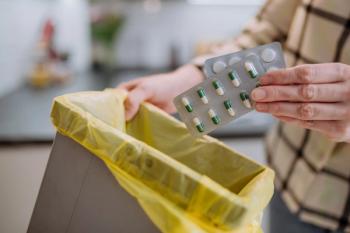
Pilot on R.Ph.s as diabetes educators goes statewide
The West Virginia Public Employees Insurance Agency (PEIA) is so impressed with its six-county pilot program to have pharmacists provide diabetes education that it's rolling the effort out statewide, said Betsy Elswick, Pharm.D., who trains pharmacists for the program.
The West Virginia Public Employees Insurance Agency (PEIA) is so impressed with its six-county pilot program to have pharmacists provide diabetes education that it's rolling the effort out statewide, said Betsy Elswick, Pharm.D., who trains pharmacists for the program.
The "Face-to-Face" initiative offers patients routine visits with a participating pharmacist of their choice for diabetes education and management. A yearlong evaluation of the program ended in April. Although the statistics have not been publicly released yet, the insurance program's officials are enthused enough about preliminary clinical indicators and positive beneficiary comments that they are making it available in all 55 counties in the state.
The program is modeled on the "gold standard" of such efforts, in Asheville, N.C. An evaluation of the Asheville Project, published in 2003, found that patients who got care in one of the 12 participating pharmacies had an average 28% reduction in medical costs, as well as improved health indicators and a decrease in sick days.
Patients who enroll in the program get waived copayments, after meeting their deductibles, for certain diabetes-related drugs, supplies, and lab tests. Elswick said the patient visits are oriented toward goal setting for improvements in key indicators. The program also emphasizes a team approach of involving various professionals in patients' care. A visit with a dietitian, for example, is encouraged and is reimbursed.
The program, which started with 24 pharmacists, now has 120, and has 965 actively participating patients, according to Elswick. The pharmacists involved are enthusiastic, she told the audience. "I've had pharmacists tell me, 'This is why I went into pharmacy.... I love health care and helping people.' "
In rural West Virginia, the need for pharmacists' involvement is particularly obvious, Elswick said. Her county, for example, has only one diabetes education program, the next closest one is an hour away, and there is no bus transportation.
Melissa Szymczak, Pharm.D., a medical information scientist with GlaxoSmithKline who spoke in the same AADE session, noted that a diabetes patient walks into a pharmacy probably four to five times more often than into any other healthcare setting. She also said diabetes patients are often on numerous medications and that pharmacists are the medication experts.
Elswick urged pharmacists nationwide to assess the need for these services in their communities and to think about the professionals they might partner with, including nurses, dietitians, or mental health professionals. She also noted that there are networks with a special focus on diabetes education in state pharmacy associations and schools of pharmacy. AADE itself has a Pharmacy Special Practice Group for pharmacists and diabetes educators who practice in pharmacy environments.
At the same time, Elswick acknowledged that various professionals might resist the change these arrangements represent. When the program started in her county, she said, some physicians were gung-ho and started referring people right away. Others were not quite sure about pharmacists taking this role. But, she said, one of those doubting physicians is now among the program's biggest sources of referrals. That transformation happened after professionals in the program met with him and exchanged information about concerns for patients.
In another event at the AADE convention, Insulet Corp. showcased its OmniPod insulin management system, which it hopes will be a much more acceptable version of the insulin pump. The pod part of the system weighs about 32 gm with 200 units of insulin in it. It can be placed on a number of sites on the body. It receives instructions by wireless computer communication from a 4.3-in. long, handheld Personal Diabetes Manager (PDM).
There is no tubing associated with the pod on the body; it is designed to be replaced and disposed of after three days of use. According to the company, the system eliminates the need to learn, manage, and carry separate infusion sets, inserters, and reservoirs. The PDM contains a blood glucose meter and automatically stores patient records. The system is due to be available by prescription later this year.
THE AUTHOR is a writer based in the Washington, D.C., area.
Newsletter
Pharmacy practice is always changing. Stay ahead of the curve with the Drug Topics newsletter and get the latest drug information, industry trends, and patient care tips.

















































































































